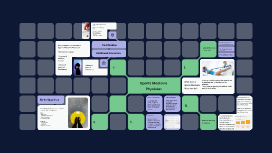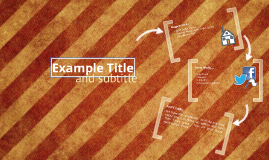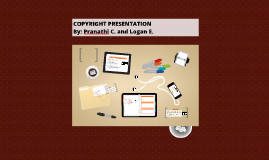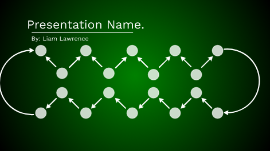Copyright Presentation
Transcript: Case #1 Intellectual Property Ideas Fair Use Principles COPYRIGHT PRESENTATION By: Pranathi C. and Logan E. Notes Case #2 Examples of Fair Use in the Classroom Ideas What is it? Copyright is a person's automatic right to possess, use, and generate benefits from things that they create. Who and what does it protect? Anything that is produced by human creativity: literary works, artistic works, movies, computer software, photography, and architecture DOES NOT cover: ideas, rules, concepts, etc. Why is copyright law needed? Copyright law protects legal rights to intellectual property. Filing copyright with the US Copyright Office enables a person to pursue and recover damages for violations to their intellectual work. Copyright Law What happened? A California school district made 1,400 copies of Microsoft Word and Adobe Photoshop and installed them on district computers Wrong? Oh yes, they didn't pay for the copies or have permission to install them. Outcome? District paid $300,000 in fines and $5 million to replace the illegal copies. Cases of Copyright Violations Creative Commons What is it? An organization that seeks to encourage creativity and enable people to share ideas freely and legally Provides copyright licenses and tools that give individuals and companies ways to keep their copyright while allowing certain uses of their creations Examples of CC licenses: Attribution, No Derivative Works, Attribution Non-commercial, Attribution Share Alike, and Attribution No Derivative Copyright vs. Creative Commons: Allows copyright owner to manage and control their rights 1. Factual information used in biographies, encyclopedias, and databases 2. Articles and illustrations from books, periodicals, and newspapers 3. Essays, short stories, and poems What happened? A Texas administrator distributed 300 copies from a book of multiple pages that he photocopied without permission from the publisher. Wrong? Yes, he didn't get permission from the publisher nor did he pay for the 300 books that the content was taken from. Outcome? District had to pay $15,000 to the publisher, which is the cost of 300 of those books. Ideas IP refers to creations of the mind and include: Patents (protect what makes things work) Trade Marks (distinguishable signs) Designs (protect the appearance of a product or logo) Copyright (automatic right when work is fixed, written, or recorded in some way) Examples of Intellectual Property: inventions literary and artistic works images names symbols Fair Use is a set of guidelines that protect educators from violating copyright laws. 1. Purpose and character of use - Copied or transformed? 2. Nature of work - Factual v. fictional 3. The amount of original work used - Less is better! 4. The effect of the original work - Profits?

















